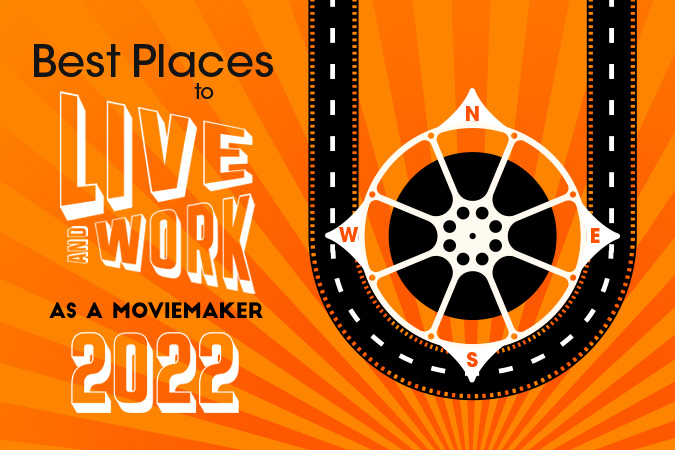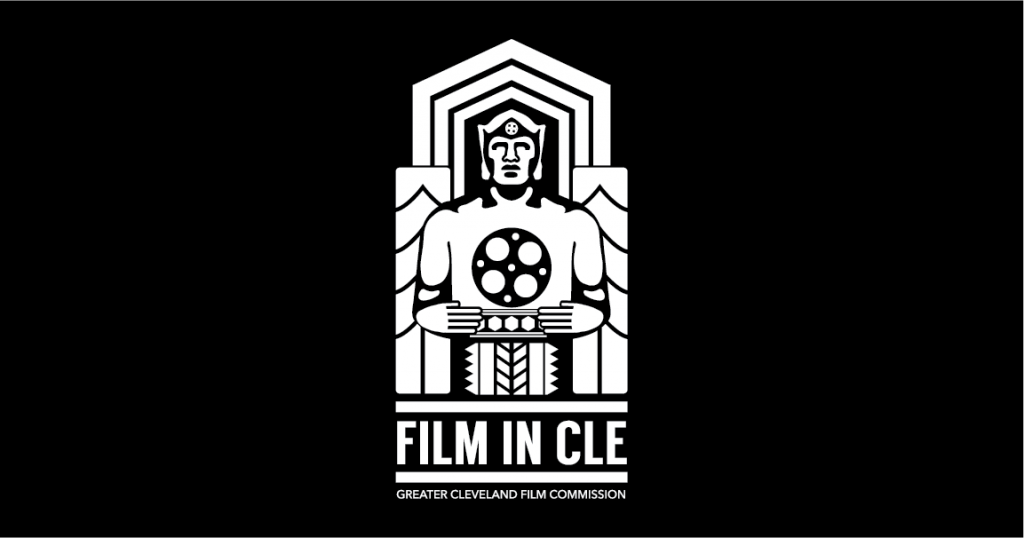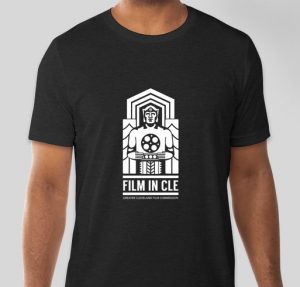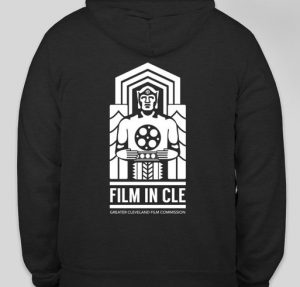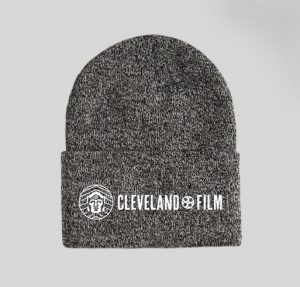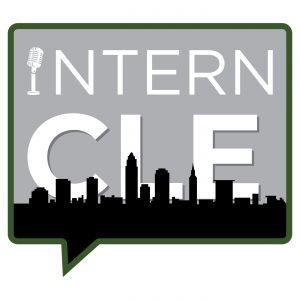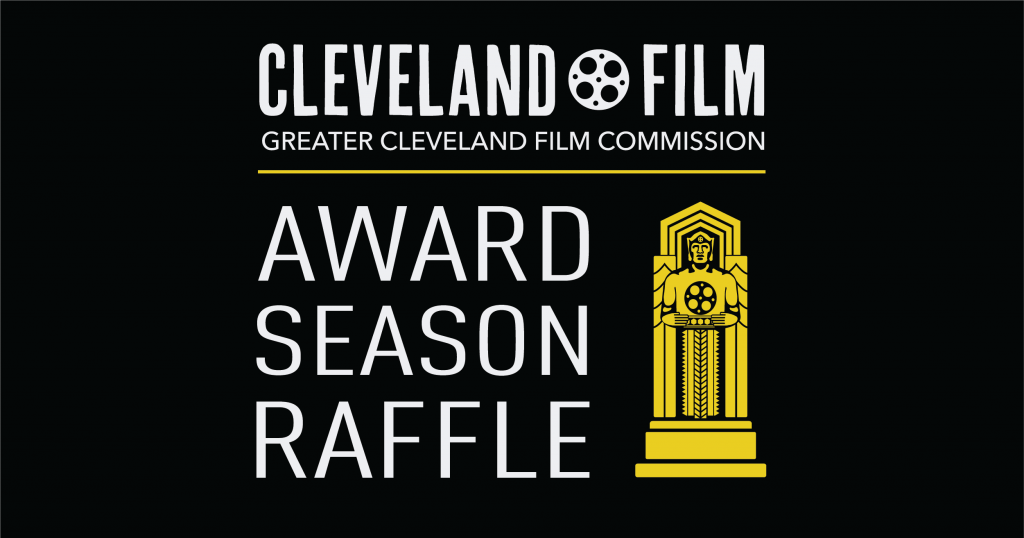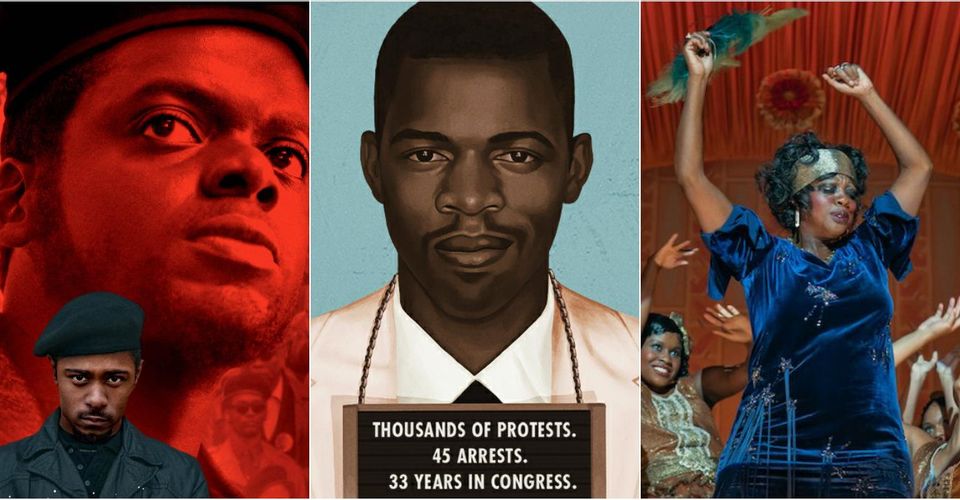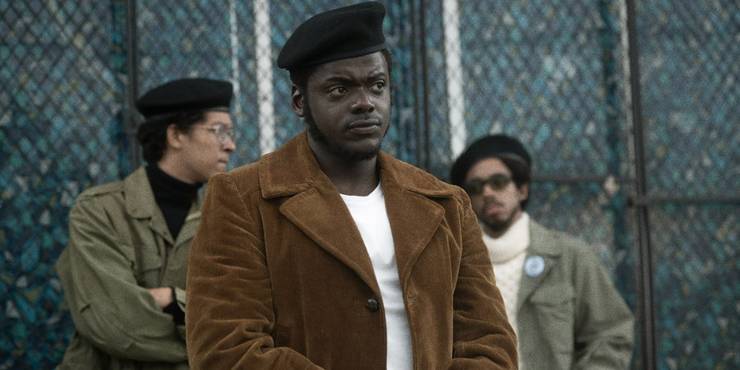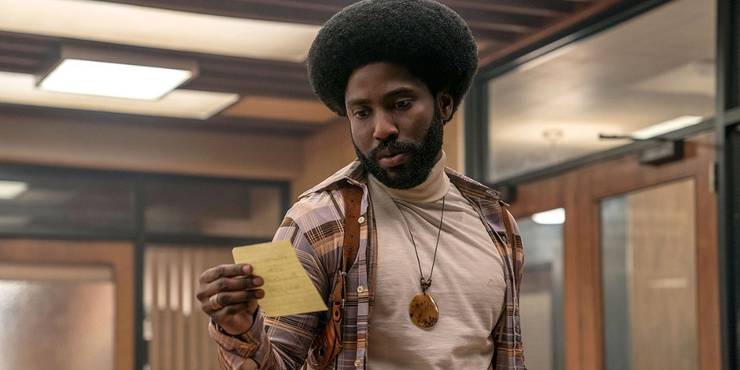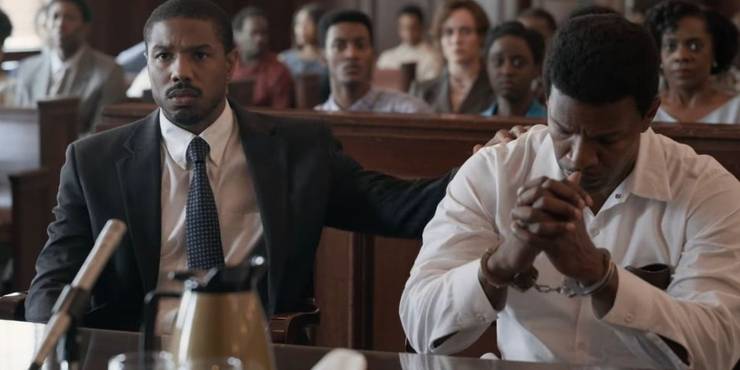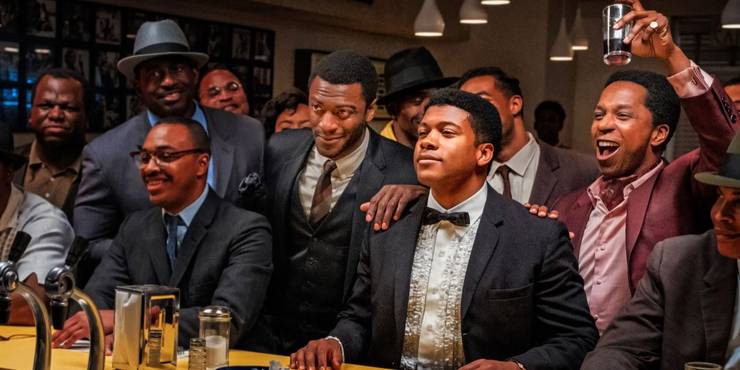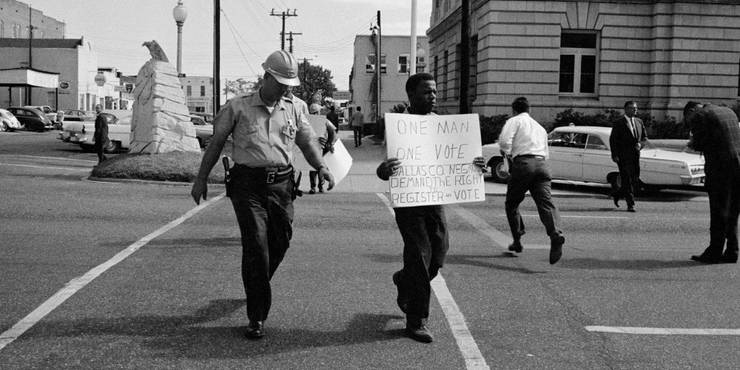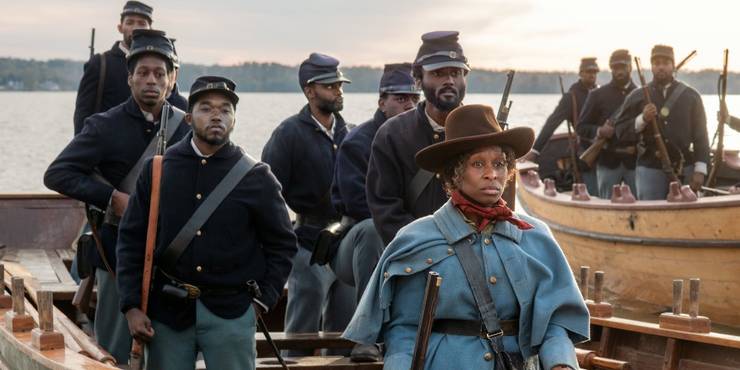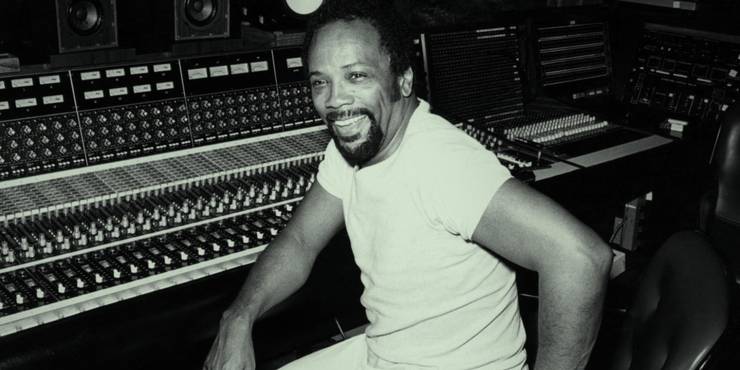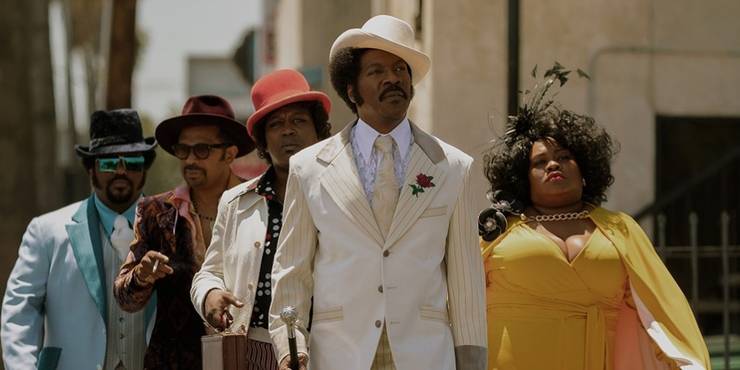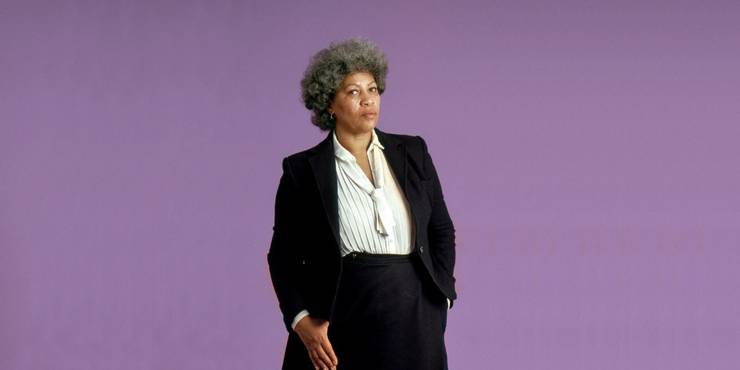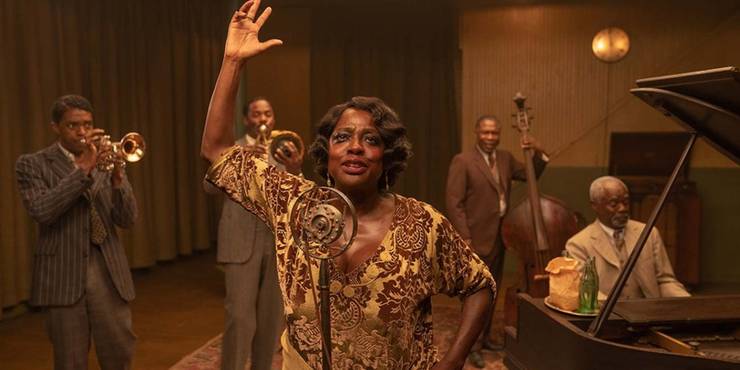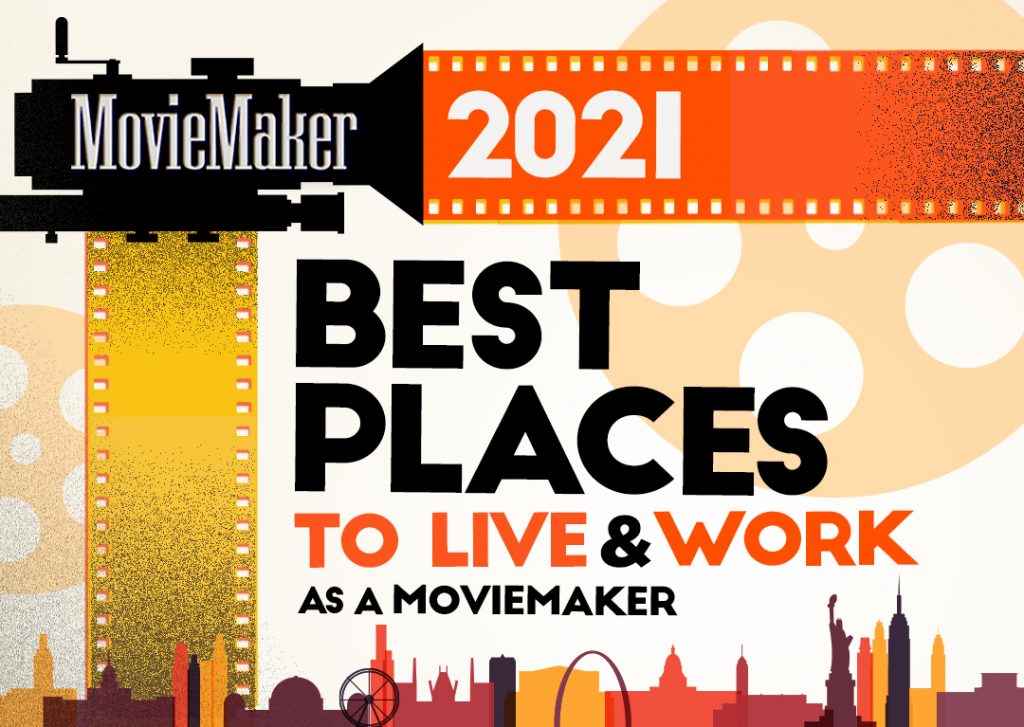SOURCE: Encyclopedia of Cleveland History, Case Western Reserve University | Pietro Shakarian, The Ohio State University
CLEVELAND ON FILM. Films have been set and shot in Cleveland since the late 19th and early 20th centuries. The rise of Cleveland’s status as a major American city coincided with the rise of motion pictures as a major entertainment medium in American life. Significantly, films made and/or set in Cleveland tend to focus on key themes reflective of the city’s history and identity, such as aviation (Ceiling Zero (1936)), LABOR (Native Land (1942) and F.I.S.T. (1978)), ethnicity and IMMIGRATION (The Deer Hunter (1978)), race (Uptight (1968)), SPORTS (The Fortune Cookie (1966) and Major League (1989)), and ROCK MUSIC (Almost Famous (2000)).
The earliest known film made in Cleveland was the short actuality film, Giant Coal Dumper (1897), produced by Ohio native Thomas Edison in New York. This early Kinetoscope short was followed by others, including Public Square, Cleveland (1900) and Cleveland Fire Department (1902). In 1908, local cameraman William Hubern Bullock captured the wreckage and debris of the COLLINWOOD SCHOOL FIRE on film. He then showed the footage at the American Theatre until Cleveland Police Chief (and future Mayor) FREDERICK KOHLER compelled him to stop. From the start, vaudeville played a significant role in the early development of film in Cleveland. Most notably, the husband-and-wife comedy team Johnny and Emma Ray shot several early two-reel comedies in the city, specifically at the COLONIAL THEATER on Superior (demolished in 1932).
The first feature made in the city was The Love Chase (1915), jointly produced by THE PLAIN DEALER and the Duchess Theater. Directed by Lawrence B. McGill, it was filmed at EDGEWATER PARK, LUNA PARK, and the large SEEANDBEE ship, as well as other locations in the city. Thousands of spectators observed the film’s production with great interest. The cast was comprised of local amateur performers who had won a Plain Dealer contest to appear in the film. The feature also included a memorable cameo from a smiling Mayor NEWTON D. BAKER. The second known feature to be made in Cleveland was the three-reel melodrama The Perils of Society (1916) directed by female film pioneer Katherine Russell Bleecker. This film was followed by a 1916 adaptation of Snow White (not to be confused with the Paramount Picture released at the same time). Distributed nationally and internationally by Educational Pictures, the now-lost four-reel film featured a cast of 200 Cleveland children and premiered at the STILLMAN THEATER. It was filmed at the H. A. Tremaine estate in CLEVELAND HEIGHTS and other locations in the Cleveland area.
In the days before Hollywood came to dominate the American film industry, Cleveland even had its own film studio, run by local filmmaker Samuel R. Brodsky. At the time, the city was one of the few in the United States with a motion picture industry of its own. The other major eastern centers were New York-New Jersey and Chicago, with southern California dominating the west. According to film historian Richard Abel, Detroit also attempted to establish itself as a center for feature film production. However, this venture did not succeed, and Detroit never attained the status of a film production center. The son of RUSSIAN JEWISH immigrant parents, Brodsky (also known professionally by his anglicized name Samuel R. Bradley) began his career as an actor and comedian on vaudeville in Cleveland in 1907. His big break came when he began working for the repertory company of playwright, impresario, and future OHIO THEATER manager ROBERT H. MCLAUGHLIN. Under McLaughlin’s tutelage, he started in minor roles and eventually began to perform in major productions by playwrights such as Edward Sheldon. From the stage, he graduated to cinema, serving as the director of the PLAIN DEALER Screen Magazine (originally known as the Plain Dealer Motion Picture Magazine). Beginning in 1917, the screen magazine was shown weekly in theaters across Cleveland and throughout Ohio, including in Akron, Canton, Youngstown, Sandusky, and as far as the Columbus, Dayton, and Toledo metro areas. Carrying the motto “The Plain Dealer Screen Magazine Sees Everything,” it was produced by a film company founded by McLaughlin known as the Argus Company (originally known as the Superior Photo Plays). The latter maintained various offices along the stretch of Prospect Ave. in DOWNTOWN CLEVELAND, later known as “Radio Row.” These included an office at the Columbia Building (112 Prospect, now demolished), at the Belmont Building (750 Prospect, today the Pointe at Gateway Apartments), at the Sloan Building (823 Prospect), and finally at the Buckeye Building (323 Prospect, today Flannery’s Pub).
Assisting Brodsky on the screen magazines were Milton Korach and innovative cameraman Ernest M. Reynolds, both of whom had cut their teeth working on the early Ray comedies in Cleveland. Occasionally, they were joined by the famous Missouri-born performer and 1920s popular music sensation Cliff “Ukulele Ike” Edwards (best known for his later voice acting at Disney). The screen magazines would cover a wide range of local news and events, from labor strikes to Edgewater Park bathing beauties. They also included animated cartoons by local cartoonist Don Wootton, and coverage of visits from prominent stars, such as Olga Petrova, Will Rogers, Samuel Goldwyn, Samuel Roxy Rothafel, and Anne Pennington. In addition, the screen magazine served to bolster the US war effort in WORLD WAR I, and Brodsky’s company also produced films that would be sent abroad to France and Italy on behalf of the U.S. government and the International Red Cross. The screen magazine also captured footage of the annual “Bal Masque” of the KOKOON ARTS CLUB and, partially, of the MAY DAY RIOTS of 1919. After the 1918 November Armistice, screen magazine cameramen were on hand to film the Allied War Exposition held at the lakefront and the CENTRAL ARMORY. The footage of that event became so renowned that it was exhibited by theaters in Chicago, Los Angeles, and San Francisco. The success of the screen magazines soon became nationally known. An envious Detroit Free Press even sought the counsel of The Plain Dealer on starting a screen magazine of its own. The result was the Detroit Free Press Film Edition.
1919 proved to be a pivotal year, as Brodsky’s company began to focus on the production of features. In that year, he and McLaughlin produced two films – The House Without Children (1919) and Hidden Charms (1919; also distributed as The Supreme Passion). These features were filmed at the ANDREWS’S FOLLY and TOM L. JOHNSON properties on EUCLID AVE. In-between these two features, Brodsky and McLaughlin also produced the one-reel film The Greatest of These (1919). This short was also filmed at the Andrews home and was made for the CLEVELAND COMMUNITY CHEST CHARITY. The local and national success of these productions encouraged Brodsky, who anglicized his name to Bradley and reinvented his company as Bradley Studios, a change that he announced at a grand banquet on February 9, 1920. He opened a new office at 2147 Prospect Ave. (today part of CLEVELAND STATE UNIVERSITY) and converted the Andrews Property (today the location of WEWS studios) into a permanent studio. McLaughlin would work as the studio’s “literary supervisor.” The studio’s films were distributed nationally and internationally through the Federated Film Exchanges of America and publicity was handled by a then-up-and-coming New York company known as Warner Bros. Only three feature film productions were made under the Bradley Studios banner – Women Men Love (1921), Dangerous Toys (1921), and False Fronts (1922). The latter two films were written by British screenwriter Edmund Goulding and ALLEN THEATRE manager S. Barret McCormick respectively. These films were major motion pictures, featuring popular actors and actresses of the day. Collaborating with McLaughlin, Brodsky also produced a second short for the Cleveland Community Chest under the Bradley banner – Suppose Nobody Cared (1920).
However, as American film production decisively moved to southern California, Brodsky shifted his focus away from feature films and back to the Plain Dealer Screen Magazine, which he continued to supervise until 1924. Nevertheless, Brodsky had not given up directing features entirely. In 1922, The Plain Dealer sponsored the production of another film, After Dark, directed by Brodsky, which premiered at the HIPPODROME THEATER on August 13, 1923. The five-reel romance, centered on an aspiring musical actress, was made almost entirely on the stage of the Hippodrome, with exterior shots filmed at various locations in Cleveland. The Plain Dealer touted it as notable for being “the first feature length picture ever made on a theater stage, in full view of the audience.” The film script and the players were chosen locally, through a contest sponsored by The Plain Dealer and the Hippodrome, echoing the earlier production of 1915’s The Love Chase. The female lead was played by a non-Clevelander, the Swedish-born actress and Ziegfeld girl, Diana Allen. Produced in only two weeks, it lacked the professionalism and polish of the earlier Brodsky films and was only shown in Cleveland. Nevertheless, Plain Dealer film critic W. WARD MARSH wrote that despite its shortcomings, the film was a “surprisingly good product.” After Dark would be Brodsky’s final feature film.
Overall, Brodsky had supervised six features, two short films, and over 300 screen magazines. All of these films today are thought to be lost and the original 35mm negatives were likely intentionally destroyed by their owners years later, especially in the aftermath of the 1929 CLEVELAND CLINIC DISASTER. The latter tragedy claimed the lives of 123 people and was caused by smoldering nitrate x-ray film stock, the same material used in motion picture production until 1951. The silent era also saw the production of the promotional film, The Heart of Cleveland (1924), by the CLEVELAND ELECTRIC ILLUMINATING CO. That same year, in international cinema, SOVIET filmmaker Lev Kuleshov decided to make the Cleveland suburb of BRECKSVILLE the hometown of the Harold Lloyd-esque title character of his comedy, The Extraordinary Adventures of Mr. West in the Land of the Bolsheviks.
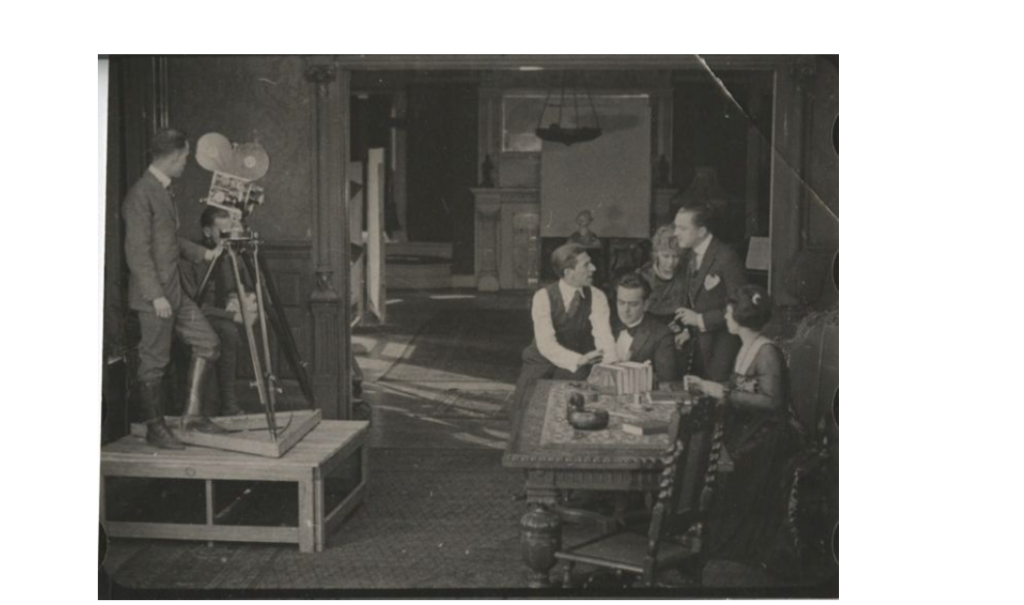
WRHS | Samuel R. Brodsky directing cameraman Ernest M. Reynolds in “House without Children,” shot at the Samuel Andrews house.
The earliest feature set in Cleveland in the “talkie” era, although not filmed in the city, was Michael Curtiz’s Goodbye Again (1933), a pre-Code romantic comedy from First National-Warner Bros. with Warren William and Joan Blondell. A precursor to the screwball comedy genre, that film was based on the then-popular Broadway production of the same name by George Haight and Allan Scott. Another Warner Bros. production, William Wellman’s Wild Boys of the Road (1933), is a gritty drama about destitute, Depression-era youth, and features a sequence set in a Cleveland Hooverville. The city was also featured in the plots of other major studio films in the 1930s, such as The Big Pond (1930) starring Maurice Chevalier and Claudette Colbert. The latter introduced audiences to the JAZZ standard “You Brought a New Kind of Love to Me”, which was also employed by the Marx Brothers in their attempt to impersonate Chevalier in Monkey Business (1933). References to Cleveland in early Paramount films produced at its Astoria Studios in New York were common; the city felt “closer” given the Astoria’s East Coast location. The first sound film made locally in Cleveland was It Happened in Cleveland (1936), financed and cast from students at John Marshall High School. The city’s position as a national center for aviation and the NATIONAL AIR RACES made it the subject of several aviation-related films produced by major Hollywood studios in the 1930s and 1940s. Prominent among these was the suspenseful Howard Hawks drama Ceiling Zero (1936) starring James Cagney and Pat O’Brien. Notably, visits to Cleveland by Cagney, O’Brien, and several other major Hollywood performers, such as Cary Grant, Jack Benny, Fanny Brice, Fred Astaire, Ginger Rogers, Helen Hayes, Frank Sinatra, Judy Garland, Ethel, John, and Lionel Barrymore, and hometown native BOB HOPE, were common during this era. In addition to promoting their films, the visiting stars often frequented restaurants such as OTTO MOSER’S and Alpine Village, which became local hangouts for celebrities at a time when Cleveland was the nation’s sixth largest city.
Based on the La Follette Committee Report of 1938, the 1942 docudrama Native Landdepicted American labor struggles in the 1930s and featured a scene set in Cleveland and references to rubber-manufacturing Akron. The film brought together original footage and dramatized re-enactments, with New York serving as a stand-in for Cleveland in reverse of what would later become a prevalent trend in the 2010s. Its filmmakers, Leo Hurwitz and Paul Strand, as well as its narrator, Paul Robeson, were later blacklisted during the McCarthy era. In 1948, decades before the TV series “Hot in Cleveland,” a young Marilyn Monroe burned up the screen in her first major film role in Ladies of the Chorus, a B picture from Columbia set in Cleveland at its burlesque capital, THE ROXY THEATER. The Kid from Cleveland (1949) was filmed in the city using the members of the 1948 World Series-winning INDIANS in scenes in and outside the MUNICIPAL STADIUM and in other downtown locations.
In 1953, photographer Jasper Wood completed the poetic short independent film, Streetcar, in Cleveland. After realistic location shooting become more prevalent, moviemaking started to move out of Hollywood more often. The first effect was felt in Cleveland with Billy Wilder’s The Fortune Cookie (1966), the first screen pairing of comedians Jack Lemmon and Walter Matthau. Staged scenes were shot in Municipal Stadium, where more than 10,000 Clevelanders gathered as extras to play the roles of football fans. Jules Dassin’s Uptight (1968) was a loose remake of the famous John Ford film The Informer (1935) about Irish revolutionaries, which used the AFRICAN AMERICAN ghettos of Cleveland’s East Side to tell the story of militants betrayed by one of their own members. That same year, independent producers Roger and Gerald Sindell pooled their resources to make Double-Step (1968), a domestic tragedy involving the family of a cellist with the Cleveland Orchestra. Featured were scenes filmed in SHAKER HEIGHTS and in the Fine Arts Garden (where a murder takes place). Hoping to capitalize on the success of the Broadway play Hair, producer John Pappas brought a crew to Cleveland to make cinema history’s first full-length tribal rock musical movie, Aquarius (1970). Open auditions for singing and dancing parts for hippie and non-hippie types were held in facilities of Playhouse Square. Shaker Hts. native and local filmmaker Harold Cornsweet came home to make a comedy called Return to Campus (1973), using locales familiar to him in Shaker Heights, in addition to scenes on the campus of The Ohio State University in Columbus.
Moviemaking in Ohio truly began to boom with the establishment of the Ohio Film Bureau in 1976. One of the first films to be made in Cleveland as a result of its efforts was The Deer Hunter (1977), which was named Best Picture of the Year. ST. THEODOSIUS RUSSIAN ORTHODOX CATHEDRAL and nearby LEMKO HALL in Cleveland’s TREMONT neighborhood provided the setting for a fictional wedding and reception. The Gathering (1977) was a made-for-TV movie filmed on location in CHAGRIN FALLS, Hudson, and Cleveland, which were translated in the movie into a generic New England city. Norman Jewison’s film F.I.S.T. (1978) featuring Sylvester Stallone his first post-Rocky role as a labor leader in 1930s Cleveland was set, but not filmed, in the city. Actress Natalie Wood strolled in front of the downtown MAY COMPANY department store and other storefronts along Euclid Ave. near PUBLIC SQUARE for the made-for-TV movie The Cracker Factory (1979). Cleveland in the 1950s was portrayed in the real Cleveland of the 1970s for the film Those Lips, Those Eyes (1979). Cleveland Heights’ open-air CAIN PARK THEATER was the setting for this screenplay by Clevelander and CASE WESTERN RESERVE UNIVERSITY graduate David Shabar. Singer Paul Simon came to Cleveland to make One Trick Pony (1979), because he felt Cleveland was the rock ‘n’ roll capital of the world. The Escape Artist (1980) was a Francis Ford Coppola production filmed downtown near CITY HALL and the CUYAHOGA COUNTY COURTHOUSE and in the FLATS, OHIO CITY, and the Cedar Rd. and Fairmount Blvd. area.
The main floor of the HIGBEE COMPANY department store, as well as all of Public Square, was transported back in time for the offbeat Jean Sheppard comedy A Christmas Story (1983), a tale told in flashback of a man remembering Christmas as a boy. In 1985 the CLEVELAND INTERNATIONAL FILM FESTIVAL featured Stranger Than Paradise (1984), directed by Clevelander Jim Jarmusch. The highly lauded film premiered at the Cannes Film Festival in France and included scenes shot on the 9th St. pier behind the former Captain Frank’s landmark restaurant, others on both the West Side and along I-71. In May 1986 Michael J. Fox spent a few days in the Cleveland area shooting the film Light of Day, directed by Paul Schrader. Locations included the Euclid Tavern on Euclid Ave. near E. 116th St. and Marshallan Prods., Inc., on W. 85th St. The sports comedy hit Major League (1989) and its less successful sequel Major League II (1994) featured a fictionalized version of the Cleveland Indians and depicted the team’s very real struggles during its 1960-1993 slump. Cleveland was also used as a stand-in location for other locales in films of the 1990s. Among them were Francis Ford Coppola’s The Rainmaker (1997), partially filmed at KEY TOWER, and Air Force One (1997) with Harrison Ford, partially filmed at SEVERANCE HALL and the County Courthouse. Conversely, the 1990s also saw the release of films that were set, but not filmed in, Cleveland. They included Telling Lies in America (1997), the semi-autobiographical coming-of-age film written by hometown native Joe Eszterhas, and Cameron Crowe’s Almost Famous (2000), which was partially set in the city.
The Greater Cleveland Film Commission (GCFC) was founded in 1998 and has served to increase opportunities for film production in Cleveland and its surrounding metropolitan area. In the 2000s, the city succeeded in attracting many independent filmmakers as well as a few big studio films to Lake Erie shores. Among them were Antwone Fisher (2002), The Soloist (2009), and American Splendor (2003), all of which were based on the lives of native Clevelanders, with the latter based on the life of underground comic book writer HARVEY PEKAR. The heist comedy, Welcome to Collinwood (2002), directed by Joe and Anthony Russo, was filmed and set in the city, especially in the COLLINWOOD neighborhood. However, the GCFC’s longtime director Ivan Schwartz realized that Cleveland could only become a major destination for film production if Ohio granted a tax break to filmmakers. This problem became especially apparent with the filming of the commercially successful crime drama Kill the Irishman (2011), a biopic of Cleveland mobster DANNY GREENE. Although the film was set in Cleveland, it was filmed in Detroit, primarily because Ohio could not match the tax credits offered to the filmmakers by Michigan.
This situation changed in 2009 when the Ohio General Assembly passed the Ohio Motion Picture Tax Credit and the number of movies filmed in Cleveland and the metropolitan area surged. Following a precedent set by Spider-Man 3 (2007), the city’s downtown began to serve as a stand-in for New York on several big budget action films, including The Avengers (2012), Captain America: The Winter Soldier (2014), and The Fate of the Furious (2017). The period since 2009 has also seen films both set and shot in Cleveland. These included the teen comedy Fun Size (2012), Ivan Reitman’s sports comedy Draft Day (2014) with Kevin Costner, and Nancy Cartwright’s In Search of Fellini (2017), which was partially shot and set in Cleveland. The city has also increasingly become the subject of documentary films. These include the ESPN documentary Believeland (2016), the Netflix series The Devil Next Door (2019) on the John Demjanjuk case, Breaking Balls (2017) about bocce and ITALIAN AMERICAN identity in Greater Cleveland, and Joe Siebert’s The Sax Man (2014) about Cleveland street saxophonist MAURICE REEDUS, JR.. Some observers have argued that Cleveland needs to be used more as setting, and less as a stand-in location on future films. However, despite such concerns, it is undeniable that increased film production has brought numerous job opportunities to Northeast Ohio and has injected much-needed investment into the local economy of Cleveland and the metropolitan area. The Ohio Motion Picture Tax Credit was extended in July 2019 by the Ohio General Assembly, promising more film productions in Cleveland in the coming years.
Abel, Richard. “Reading newspapers and writing American silent history.” In The Routledge Companion to New Cinema History, ed. Daniel Biltereyst, Richard Maltby, and Philippe Meers (London: Routledge, 2019), 68-82.
Dutka, Alan F. Historic Movie Theaters of Downtown Cleveland (Charleston: History Press Library, 2016).
Plain Dealer archives.
